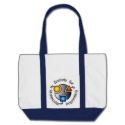|
|
Reference type: Journal
Authors: Pérez-Moral N, Mayes AG
Article Title: Comparative study of imprinted polymer particles prepared by different polymerisation methods.
Publication date: 2004
Journal: Analytica Chimica Acta
Volume: 504
Issue: (1)
Page numbers: 15-21.
DOI: 10.1016/S0003-2670(03)00533-6
Abstract: To date, imprinted polymers in the form of particles are reportedly made by various polymerisation methodologies, each of them developed to suit specific targets. Polymers made by different methods have, so far, never been directly compared and tested under the same conditions to assess their potential rebinding characteristics, and hence the effect of the production method on the performance of the final imprinted material. In this comparative study, polymers with a similar composition were synthesised by bulk, suspension, emulsion, two-step swelling and precipitation polymerisation. The resulting imprinted materials were characterised physically and their capacity to rebind propranolol under identical analytical conditions was assessed from organic and aqueous solutions by radioligand binding. The results showed that, when specific rebinding of ligand was measured in an organic solution (toluene + 0.5% acetic acid), the methods compared as follows: precipitation (50%) > suspension (40%) > bulk (35%) > core- shell (15%) > two-step swelling (10%). When specific rebinding from an aqueous solution (sodium citrate 25 mM + 0.5% acetic acid + 2% ethanol, pH 4.6) was measured, the results were somewhat different: two-step swelling (20%) congruent to suspension (19%) congruent to bulk (19%) > core-shell (15%) > precipitation (0%). (C) 2003 Elsevier B.V. All rights reserved
|


 Good morning caffeine mug
Good morning caffeine mug







 SMI logo impulse tote bag
SMI logo impulse tote bag







 SMI mug grey
SMI mug grey






